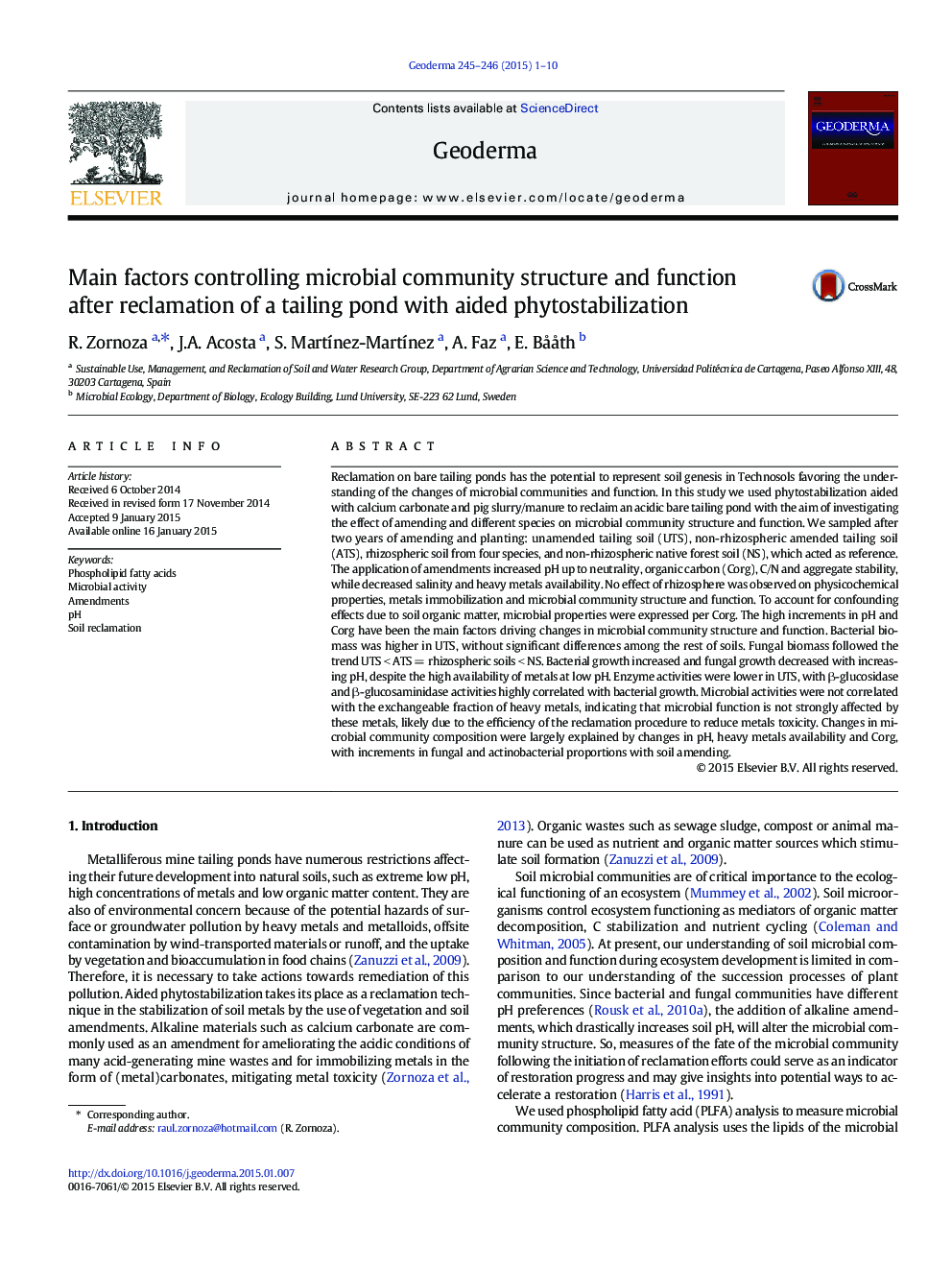| کد مقاله | کد نشریه | سال انتشار | مقاله انگلیسی | نسخه تمام متن |
|---|---|---|---|---|
| 4573182 | 1629463 | 2015 | 10 صفحه PDF | دانلود رایگان |
• Reclamation led to microbial communities closer to native soil than to mining soil.
• The pH and organic C are the driving factors changing microbial community structure.
• Microbial activities were not correlated with exchangeable fractions of metals.
• Rhizosphere had no significant effect on microbial community structure and function.
Reclamation on bare tailing ponds has the potential to represent soil genesis in Technosols favoring the understanding of the changes of microbial communities and function. In this study we used phytostabilization aided with calcium carbonate and pig slurry/manure to reclaim an acidic bare tailing pond with the aim of investigating the effect of amending and different species on microbial community structure and function. We sampled after two years of amending and planting: unamended tailing soil (UTS), non-rhizospheric amended tailing soil (ATS), rhizospheric soil from four species, and non-rhizospheric native forest soil (NS), which acted as reference. The application of amendments increased pH up to neutrality, organic carbon (Corg), C/N and aggregate stability, while decreased salinity and heavy metals availability. No effect of rhizosphere was observed on physicochemical properties, metals immobilization and microbial community structure and function. To account for confounding effects due to soil organic matter, microbial properties were expressed per Corg. The high increments in pH and Corg have been the main factors driving changes in microbial community structure and function. Bacterial biomass was higher in UTS, without significant differences among the rest of soils. Fungal biomass followed the trend UTS < ATS = rhizospheric soils < NS. Bacterial growth increased and fungal growth decreased with increasing pH, despite the high availability of metals at low pH. Enzyme activities were lower in UTS, with β-glucosidase and β-glucosaminidase activities highly correlated with bacterial growth. Microbial activities were not correlated with the exchangeable fraction of heavy metals, indicating that microbial function is not strongly affected by these metals, likely due to the efficiency of the reclamation procedure to reduce metals toxicity. Changes in microbial community composition were largely explained by changes in pH, heavy metals availability and Corg, with increments in fungal and actinobacterial proportions with soil amending.
Journal: Geoderma - Volumes 245–246, May 2015, Pages 1–10
